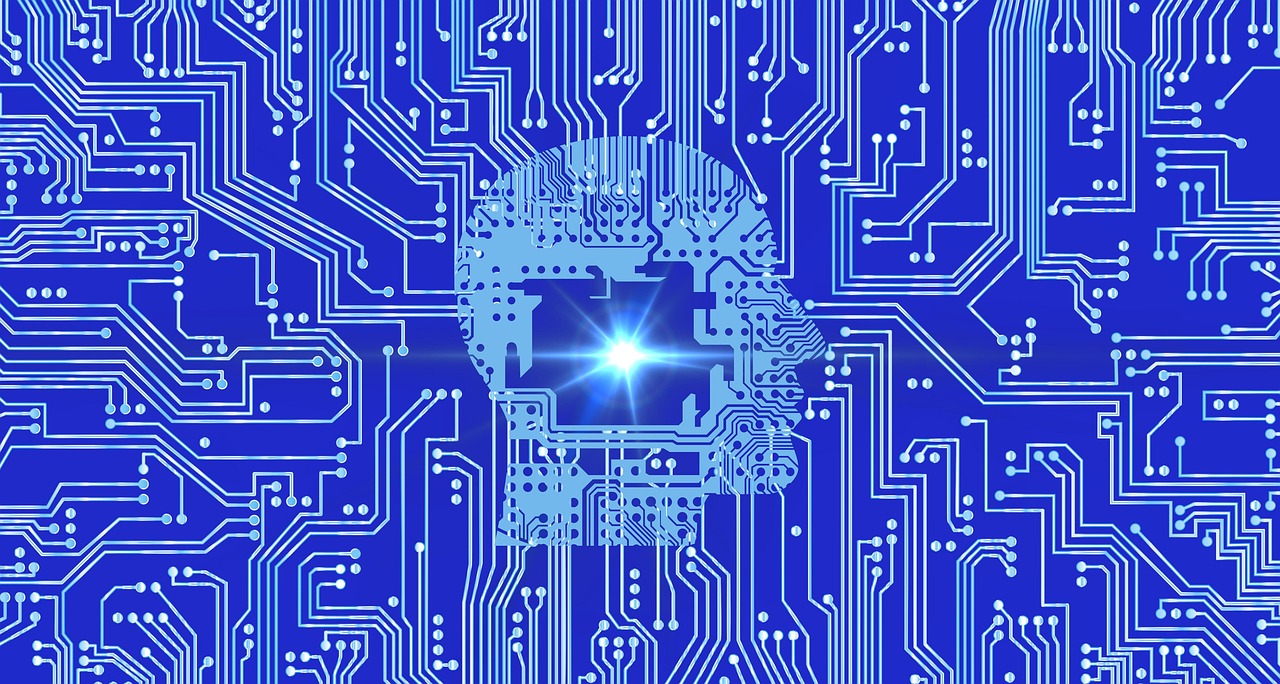Artificial intelligence (AI) development is rapidly transforming industries and reshaping our daily lives. From self-driving cars to personalized healthcare, AI’s potential seems limitless. This blog post delves into the intricacies of AI development, exploring key concepts, methodologies, and practical applications to provide a comprehensive understanding of this exciting field. Whether you’re a seasoned developer or just curious about AI, this guide will offer valuable insights into navigating the world of AI development.
Understanding the Fundamentals of AI Development
What is Artificial Intelligence?
At its core, artificial intelligence is about creating systems that can perform tasks that typically require human intelligence. These tasks include:
- Learning: Acquiring information and rules for using it.
- Reasoning: Using rules to reach conclusions (both approximate and definite).
- Problem-solving: Formulating and executing a plan to achieve a desired goal.
- Perception: Analyzing visual, auditory, and other sensory inputs.
- Natural Language Processing (NLP): Understanding and generating human language.
AI isn’t a single technology but rather a broad field encompassing various techniques and approaches.
Key Components of AI Development
AI development relies on several crucial components:
- Data: High-quality, relevant data is the fuel that powers AI models. The more data available, the better the model can learn. For example, training a facial recognition system requires vast datasets of images.
- Algorithms: These are sets of rules or instructions that an AI model follows to learn from data. Common algorithms include linear regression, logistic regression, decision trees, and neural networks.
- Computing Power: AI models, especially deep learning models, require significant computational resources for training. This often involves utilizing powerful GPUs (Graphics Processing Units) and cloud computing platforms.
- Programming Languages & Frameworks: Python is the most popular language for AI development, due to its extensive libraries and frameworks like TensorFlow, PyTorch, and scikit-learn. R is also used for statistical computing and data analysis.
Types of AI
AI can be broadly categorized into several types, each with its own strengths and applications:
- Narrow or Weak AI: Designed for specific tasks, like spam filtering or voice assistants. This is the most common type of AI currently in use.
- General or Strong AI: Hypothetical AI with human-level intelligence, capable of performing any intellectual task that a human being can. This does not yet exist.
- Super AI: Hypothetical AI that surpasses human intelligence in every aspect. This is currently in the realm of science fiction.
The AI Development Lifecycle
Data Collection and Preparation
The first step in any AI project is gathering and preparing data. This involves:
- Data Acquisition: Identifying and collecting relevant data from various sources, such as databases, APIs, web scraping, and sensors. For instance, a fraud detection system might collect transaction data, user profiles, and device information.
- Data Cleaning: Removing inconsistencies, errors, and missing values from the dataset. This ensures data quality and improves model accuracy.
- Data Transformation: Converting data into a suitable format for the AI model. This may involve scaling numerical features, encoding categorical features, and creating new features based on existing ones.
- Data Splitting: Dividing the dataset into training, validation, and testing sets. The training set is used to train the model, the validation set is used to tune hyperparameters, and the testing set is used to evaluate the model’s performance. A common split is 70% training, 15% validation, and 15% testing.
Model Selection and Training
Choosing the right AI model is crucial for achieving the desired results. The selection depends on the type of problem, the available data, and the desired accuracy.
- Algorithm Selection: Choosing an appropriate algorithm based on the problem type (e.g., classification, regression, clustering). For example, use a support vector machine (SVM) for image classification.
- Model Architecture: Designing the structure of the AI model, especially for deep learning models. This includes defining the number of layers, the types of layers, and the connections between layers. For example, convolutional neural networks (CNNs) are often used for image processing.
- Training the Model: Feeding the training data into the model and adjusting its parameters to minimize the error between its predictions and the actual values. This process is iterative and involves optimizing the model’s performance.
- Hyperparameter Tuning: Adjusting the model’s hyperparameters (e.g., learning rate, batch size, regularization strength) to improve its performance on the validation set. Techniques like grid search, random search, and Bayesian optimization can be used for hyperparameter tuning.
Model Evaluation and Deployment
After training the model, it needs to be evaluated and deployed for real-world use.
- Performance Metrics: Evaluate the model’s performance using appropriate metrics such as accuracy, precision, recall, F1-score, and AUC (Area Under the Curve). The choice of metric depends on the specific problem and the desired trade-offs between different types of errors.
- Deployment: Deploy the trained model to a production environment where it can be used to make predictions on new data. This may involve deploying the model to a cloud platform, embedding it in a mobile app, or integrating it with an existing software system.
- Monitoring: Continuously monitor the model’s performance in production and retrain it periodically with new data to maintain its accuracy and relevance. This ensures that the model adapts to changing data patterns and avoids performance degradation. For example, a model used for predicting customer churn needs to be regularly retrained as customer behavior evolves.
Essential Tools and Technologies for AI Development
Programming Languages and Libraries
Selecting the right programming language and libraries is essential for efficient AI development:
- Python: The most popular language for AI development, with a rich ecosystem of libraries and frameworks.
- TensorFlow: An open-source machine learning framework developed by Google, widely used for building and training deep learning models. It supports both CPU and GPU acceleration.
- PyTorch: Another popular open-source machine learning framework, known for its flexibility and ease of use. It’s particularly well-suited for research and experimentation.
- Scikit-learn: A comprehensive library for machine learning tasks such as classification, regression, clustering, and dimensionality reduction. It provides a wide range of algorithms and tools for data analysis and model evaluation.
- Keras: A high-level API for building and training neural networks, which can run on top of TensorFlow, PyTorch, or other backends. It simplifies the process of building complex models.
Cloud Computing Platforms
Cloud computing platforms provide the necessary infrastructure and resources for AI development:
- Amazon Web Services (AWS): Offers a wide range of AI and machine learning services, including SageMaker, which provides a managed environment for building, training, and deploying AI models.
- Google Cloud Platform (GCP): Provides AI and machine learning services such as Vertex AI, which offers a unified platform for building and deploying AI models.
- Microsoft Azure: Offers AI and machine learning services such as Azure Machine Learning, which provides a cloud-based platform for building, training, and deploying AI models.
Data Visualization Tools
Visualizing data is essential for understanding patterns and insights:
- Matplotlib: A popular Python library for creating static, interactive, and animated visualizations in Python.
- Seaborn: A Python library based on Matplotlib that provides a high-level interface for creating informative and visually appealing statistical graphics.
- Tableau: A powerful data visualization tool that allows users to create interactive dashboards and reports.
- Power BI: Microsoft’s business analytics service that provides interactive visualizations and business intelligence capabilities.
Real-World Applications of AI Development
Healthcare
AI is revolutionizing healthcare by enabling:
- Diagnosis and Treatment: AI-powered systems can analyze medical images (e.g., X-rays, MRIs) to detect diseases earlier and more accurately. For example, AI algorithms can detect cancerous tumors in mammograms with greater sensitivity than human radiologists.
- Personalized Medicine: AI can analyze patient data to tailor treatments to individual needs and genetic profiles. This can lead to more effective and targeted therapies.
- Drug Discovery: AI can accelerate the drug discovery process by identifying potential drug candidates and predicting their effectiveness.
- Remote Patient Monitoring: AI-powered devices can monitor patients’ vital signs and provide real-time alerts to healthcare providers.
Finance
AI is transforming the finance industry by:
- Fraud Detection: AI algorithms can analyze transaction data to identify and prevent fraudulent activities.
- Algorithmic Trading: AI-powered trading systems can execute trades based on market trends and patterns.
- Risk Management: AI can assess and manage financial risks by analyzing historical data and predicting future market conditions.
- Customer Service: AI-powered chatbots can provide instant customer support and answer common queries.
Retail
AI is enhancing the retail experience by:
- Personalized Recommendations: AI algorithms can analyze customer data to provide personalized product recommendations.
- Inventory Management: AI can optimize inventory levels by predicting demand and managing supply chains.
- Chatbots and Virtual Assistants: AI-powered chatbots can assist customers with product inquiries and purchases.
- Predictive Analytics: AI can predict future sales trends and optimize pricing strategies.
Ethical Considerations in AI Development
Bias and Fairness
AI models can perpetuate and amplify existing biases in the data they are trained on. It’s crucial to ensure fairness and avoid discrimination in AI applications.
- Data Bias: Ensure that the training data is representative of the population and does not contain biases.
- Algorithmic Bias: Evaluate AI models for bias and implement mitigation strategies to ensure fairness.
- Transparency: Make AI models more transparent and explainable to understand their decision-making processes.
Privacy
AI applications often involve collecting and analyzing sensitive personal data. It’s essential to protect user privacy and comply with data protection regulations.
- Data Minimization: Collect only the data that is necessary for the AI application.
- Anonymization and Pseudonymization: Protect user identities by anonymizing or pseudonymizing data.
- Data Security: Implement robust security measures to protect data from unauthorized access and breaches.
Accountability
It’s important to establish clear lines of accountability for the decisions made by AI systems.
- Human Oversight: Implement human oversight mechanisms to monitor and control AI systems.
- Auditability: Ensure that AI systems are auditable and that their decisions can be traced back to their origins.
- Ethical Guidelines: Develop and adhere to ethical guidelines for AI development and deployment.
Conclusion
AI development is a rapidly evolving field with immense potential to transform industries and improve our lives. By understanding the fundamentals of AI, following the AI development lifecycle, utilizing essential tools and technologies, and addressing ethical considerations, developers can create innovative and impactful AI applications. As AI continues to advance, it’s crucial to stay informed, embrace continuous learning, and contribute to the responsible development of AI. The future of AI is bright, and with careful planning and execution, we can harness its power for the betterment of society.




